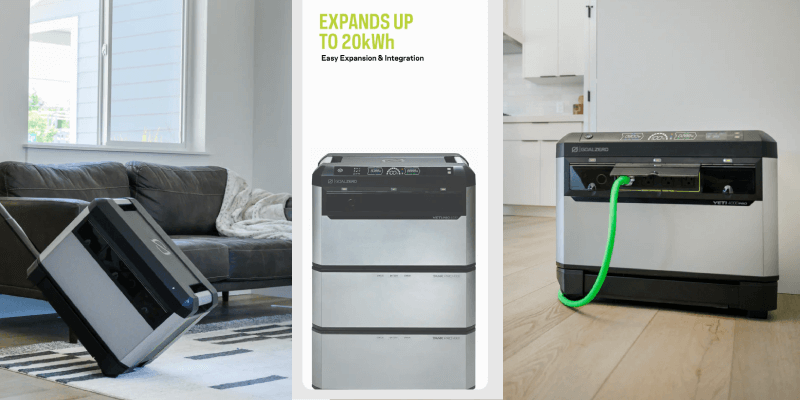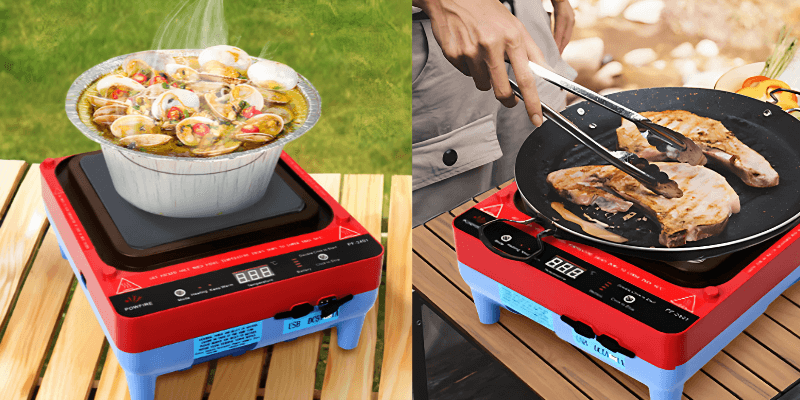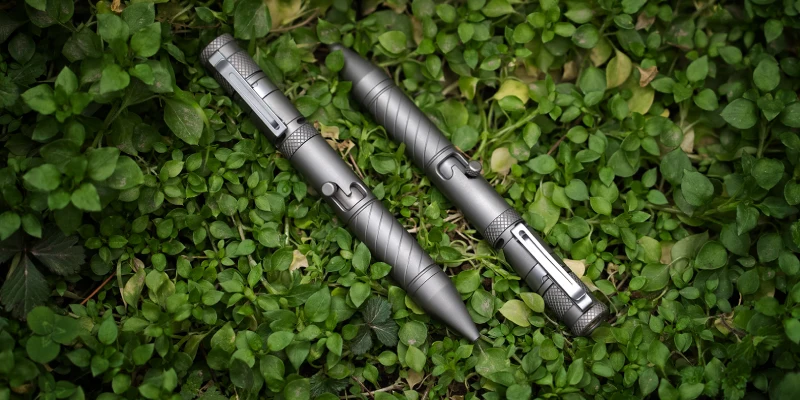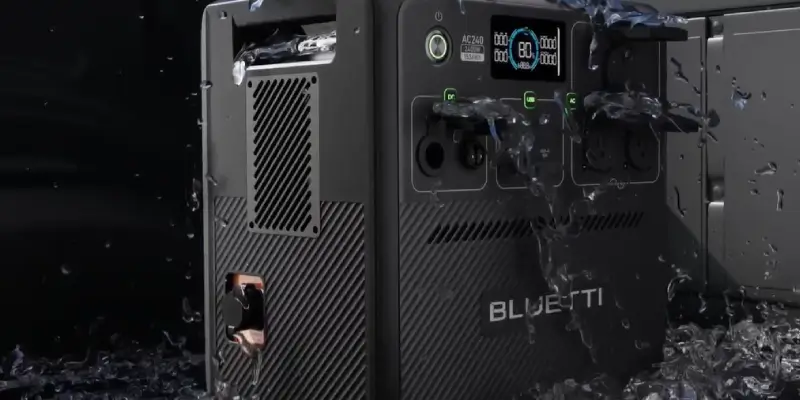Finally, we have a new solar generator from Goal Zero. After a gap of more than two years, the brand has updated its Yeti lineup with its first LiFePO4 power station. Called the Yeti Pro 4000, it is evidently the biggest of the series and is meant for RVs, homes, and large-scale portable power applications.
Thanks to the new LFP battery, the Yeti Pro 4000 can last for over 10 years, and with its expandability, you can crank up storage capacity to new levels. Fine, the 3,994 Wh battery can be lifted up to 20 kWh using its TankPro 4000 expansion modules, and its solar input rate is a massive 3000 watts.
View Yeti Pro 4000 on Amazon.Com Here
With faster solar charging, the heavy-duty machine can be charged to its full capacity (0% to 100%) in just two hours while you are off-grid. When it comes to AC charging, it has three times faster charging speeds than the former models, with an 1800W input that can charge it from 0% to 80% in two hours.
Goal Zero Yeti Pro 4000 at a Glance
|
Overall, though very late, Goal Zero has emerged with a model that, spec-wise, is really competitive with the popular models from its competitors, like Bluetti, EcoFlow, and Jackery. It is indeed a fact that the new Yeti Pro 4000 will face tough competition from models like the Bluetti AC500 and AC300, the EcoFlow Delta Pro, and the Jackery Explorer 3000 Plus to stay strong.
Still, I am a little bit doubtful about the scope for yet another large-size LiFePO4 power station, as long as the portable solar power market is largely saturated with several models in all segments.
Anyway, a whole-house, modular LFP power station from Goal Zero for RV, home, and outdoor life is hopeful. Maybe the escalating competition will help bring down the prices of these advanced portable power systems and let more people find the best storage systems for their off-grid power needs.
Goal Zero Yeti Pro 4000 Price and Availability
The Yeti Pro 4000 has been launched with a base price of $3,999.95, and, of course, the price will go up as you add extra batteries, solar panels, and other accessories. You can customize your package of the portable power system with the new Yeti on the brand’s website and get going with the best power solution for your off-grid or emergency life.
Why Should You Buy the Yeti Pro 4000?
Simply put, this is the first real whole-house and RV-friendly battery pack from Goal Zero, the premier player in the market for solar power stations with a history spanning around 15 years.
Though its recent competitors outplayed the brand with a wide range of models and advanced technologies, Goal Zero has been one of the favorites of Americans, and below are the reasons why you can consider buying its brand-new solar generator.
Powerful Inverter with Best-in-Class Output
Yes, having a new 3600W inverter with a surge of 7200 watts, the Yeti Pro 4000 certainly outperforms its previous flagship models, the Yeti 6000X and Yeti 3000X, which carry 2000-watt inverters.
The higher output makes the new Yeti smoothly run your bigger appliances off-grid and at home, as it perfectly supports any kind of appliance other than a full-size air conditioner.
The new powerful inverter also gives the Yeti an edge over its top competitors like the Bluetti AC300 and Jackery Explorer 3000 Plus. These two models have 3000-watt inverters, while EcoFlow’s Delta Pro has a 36000W inverter and Bluetti’s flagship AC500 has a more powerful 5000-watt inverter.
Fast Solar and AC Charging Inputs
The new Goal Zero power station is equipped with fast charging options like a 3000W solar input and an 1800W AC input, making the device comparable to the latest models from EcoFlow and Bluetti.
As per the brand, it will take only two hours for the power station to fully charge from a solar output of up to 3000 watts. The brand’s Boulder and Ranger series of solar panels can be bundled with the battery for fast and quick solar charging.
As far as the AC wall charging is concerned, you can charge it up to 80% in just two hours with its 1800W AC input. You can also charge it from a carport or a vehicle’s alternator (400 watts), like any other power station over there.
Quick Expansion and Easy Integration
You can expand a Yeti Pro 4000 up to 20 kWh using the brand’s special TankPro 4000 extra battery modules, which can be easily attached to the main unit in simple steps for convenience and space-saving. Up to four modules can be linked to a single Yeti Pro 4000, which can be simply integrated into a home circuit and RV panel to support your blackout and off-grid power needs.
Goal Zero’s Home Backup Power System
The new Goal Zero Yeti Pro 4000 also marks the brand’s foray into the market of complete whole-house home backup power systems in competition with EcoFlow’s Delta Pro and Bluetti EP800. With the brand’s Haven 10 Transfer Switch, you can connect the Yeti Pro 4000 to as many as 10 circuits in your home to run different appliances like fridges, power tools, medical equipment, and more.
It means that you can place your Yeti Pro 4000 along with its extra batteries in a permanent position adjacent to your home power panel and get emergency power for the entire appliance with no worry. You don’t need to haul it around your house to power individual devices and appliances.
The Haven 10 Transfer Switch is priced at $600 if you buy it individually, but the brand has packed it in different Yeti Pro 4000 bundles along with the extra batteries, solar panels, and other accessories.
Goal Zero Yeti Pro 4000 vs. Bluetti AC300+B300S
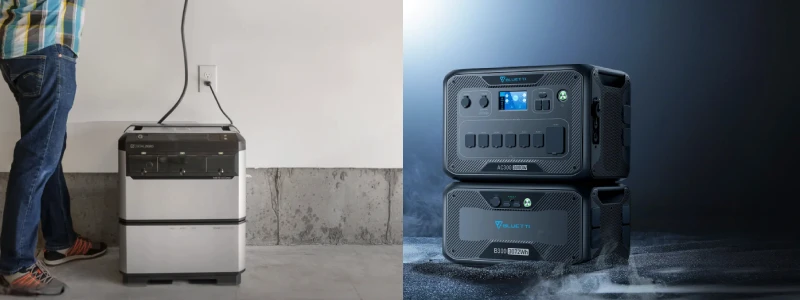
In my view, the AC300+B300 is the closest Bluetti alternative to the new Goal Zero Yeti Pro 4000, even if the latter outplays Bluetti’s best-selling model in several aspects, including the total capacity, inverter power, solar charging speeds, and more.
Specifically, the Bluetti device is a 3/12.2 kWh modular power station with a 3000W inverter, while the Goal Zero is a 3.9/20 kWh battery pack with a 3600W inverter.
View Bluetti AC300+B300 on Amazon.Com Here
But the key difference, as you know, is that the Bluetti AC300, being a 100% modular battery, is a two-module machine, as its base unit doesn’t feature a battery pack, whereas the Goal Zero alternative is a conventional model with a built-in battery in the mother unit.
However, you get the Bluetti model, including a single unit of its B300 external battery, at a lower price than the new Goal Zero model. The difference is around a whopping $1000. In addition, you can enjoy the advantage of added portability with the Bluetti, as it comes in two parts.
When it comes to charging, Bluetti has an edge in AC charging with a 3000-watt input, while Goal Zero has an 1800-watt input, but the brand offers faster charging from the AC wall socket.
At the same time, the Goal Zero model has a better solar charging rate, as it has a 3000W input against the Bluetti AC300’s 2400W input, and as per Goal Zero, the Yeti 4000 Pro can be solar-charged fully from zero to 100% in just 90 minutes.
Goal Zero Yeti Pro 4000 vs. EcoFlow Delta Pro
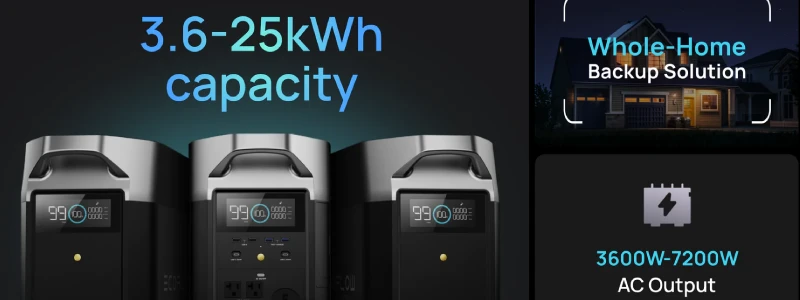
In the EcoFlow line, we have the Delta Pro as the key competitor to the new Goal Zero battery. Unlike the Bluetti AC300+B300, the Delta Pro seems to be a rather strong rival to the Goal Zero replacement, with almost the same battery capacity and inverter power.
The Delta Pro, as you know, has a 3600W AC inverter with a surge of 7200 watts, and the battery is a 3.6 Wh built-in unit, while you can expand the device up to 25 kWh using the brand’s smart extra battery units and a smart gas generator.
View EcoFlow Delta Pro on Amazon.Com Here
Both the Delta Pro and Yeti 1400 Pro have 1800W AC charging inputs, while the latter outperforms the former with almost a two-times better 3000W solar input. The Delta Pro can only be charged with a solar input of up to 1600 watts.
But remember that the Delta Pro has been around there for over two years, and as per reports, EcoFlow is working on the second generation of its much-popular flagship model, which is also being sold as the brand’s whole-house battery pack in competition to the Bluetti EP800, EP900, and other big-size power stations like the Mango Power E and Zendure SuperBase V.
Maybe a new EcoFlow Delta Pro 2 will soon be hitting the stores to take on the Goal Zero product with a better price and more incredible features.
As for the price, the Delta Pro alone (with no extra battery or other accessories) is on sale for just $3000, which is again $1000 cheaper than the Goal Zero alternative.
The Goal Zero Yeti 400 Pro Launch Event and Responses
The big release from Goal Zero took place on October 3, 2023. The product was introduced by Bill Harmon, the general manager, and Keyvan Vasefi, the head of product development, in a video that spanned around one hour.
There was a decent customer response to the product launch. Some are excited about the flexibility, portability, and modularity of the new Goal Zero power station, while others say they didn’t expect a big power station but an upgraded mid-size variant as the next machine from the brand.

Liam Eck is a full-time blogger who is passionate about green and sustainable lifestyle inventions and products. At PureInvents, he covers the topics of green technology, alternative energy, solar energy storage systems, and other smart and green inventions. #Contact Liam at liameck@pureinvents.com – Twitter – Reddit
